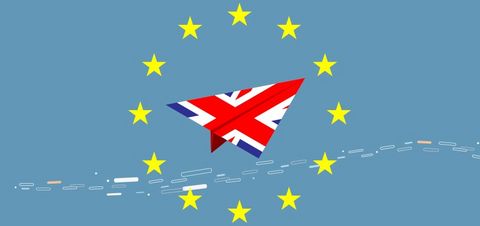Analyses & Studies
No fireworks, domestic fireworks and trade fireworks

The front page of The Guardian read: ‘We’re in - but without the fireworks.’ That was on 1 January 1973, when the UK joined the then EEC. Forty seven years later, following the December 2019 election delivering the mandate for Prime Minister Johnson, the UK has left the EU. The headline could easily have read: ‘We’re out - but without the fireworks.’
Fireworks, I argue, could still come later if the trade negotiations stall, an extension is ruled out, and no deal beckons. However, no one was predicting the fireworks during the recent Cabinet reshuffle, when the Chancellor walked out at what he saw as a power grab by the Prime Minister. That dramatic moment further underlines that, on the UK side, trade negotiations with the EU will be built by and driven from Number 10. As Katy Balls wrote in the i newspaper: ‘There was concern in No 10 that […] Javid and his team […] could get nervous and have second thoughts if no free trade agreement had been agreed by the end of the transition.’
Unusually for such big negotiations, both the timetable is incredibly tight – now less than eleven months – and it is about agreeing a worse trade deal than currently exists. This gives meaning to the now oft heard phrases ‘trade friction,’ ‘third country,’ or that we should be negotiating a ‘Canada deal,’ or accepting an ‘Australia deal,’ even though no actually trade deal exists between the EU and Australia.
Currently, the UK is in the transition period. In this period, the biggest changes are UK ministers not attending meetings of the EU, no UK Commissioner and no UK MEPs. Until the end of 2020, the UK remains in the EU single market, customs union, a follower of EU rules and contributing to the EU budget. Everything is different, yet Brexit is done and very little has changed.
The last few weeks have seen the EU finalising its negotiating mandate. The Prime Minister’s Greenwich speech and the David Frost speech in Brussels have set out the UK Government’s position. Let’s give an example to illustrate the differences that will need to be bridged or conceded to agree: Boris Johnson argued for no tariffs, no quotas and regulatory co-operation to address technical barriers to trade. Michel Barnier agreed on behalf of the EU to remove all tariffs and quotas contingent on a legal commitment to a level playing field. Such a level playing field would mean common standards, an alignment in labour law, environmental standards and state aid rules. The EU position was strongly challenged in the Frost speech and the French foreign minister, Jean-Yves Le Drian underlined that the negotiations will be tough to bridge these differences. ‘I think that on trade issues and the mechanism for future relations [...] we are going to rip each other apart,’ he said.
Despite all these fireworks going off during the negotiations, the most likely outcome at the end of the year is what former Prime Minister John Major called a ‘flimsy deal,’ or what I am calling a ‘Canada-minus deal.’ This also implies on-going discussions from 2021 on the many aspects not covered in the trade deal. However, even this Canada-minus deal depends on the red lines on both sides getting pinker and therefore no deal – and by that I mean a non-existent Australian deal – remains on the table.
Neil Sherlock CBE
Co-Chair, Brexit Forum